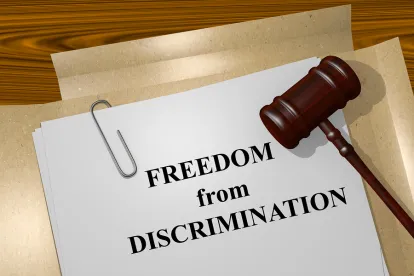The past year and-a-half has been eventful for colleges and universities regarding Title IX litigation and incidents. Colleges, universities and school systems have scrambled to figure out how to comply with administrative rules and regulations, recognize the rights of all individuals implicated in the Title IX process and ensure sexual assaults on campuses are effectively investigated and addressed. The following article discusses and identifies important basics, best practices and developments, all of which are key to implementing effective policies, procedures and investigations on campuses to ensure Title IX compliance.
I. Title IX Basics
Congress passed Title IX of the Education Amendments of 1972 to prohibit sex discrimination in educational institutions that receive federal funding. The language of the act makes it unlawful for any person, “on the basis of sex, [to] be excluded from participation in, be denied the benefits of, or be subjected to discrimination under any education program or activity receiving Federal financial assistance . . . .” (20 U.S.C. § 1681).
In addition to its well-known effects on academic and athletics programs, Title IX has impacted recipient institutions by prohibiting sexual harassment on college campuses. As outlined in its 2001 Title IX Guidance, the Office of Civil Rights (OCR) considers acts of sexual harassment, including sexual assault, violations of Title IX. Harassing conduct has the ability to create a hostile environment, particularly when the harassment is severe or repetitive.
In a 2011 Dear Colleague Letter (DCL), the Department of Education established certain expectations and standards for Title IX enforcement at educational institutions. These standards focused on two areas: (1) promoting awareness of Title IX protections and reporting procedures, and (2) responding to claims of sexual harassment and assault that would constitute Title IX violations. Among the new requirements, each recipient institution had to:
-
Publish a notice of nondiscrimination stating the school does not discriminate on the basis of sex, in accordance with Title IX;
-
Designate one person at each institution as a Title IX Coordinator to serve as the coordinator for Title IX compliance and to handle reports of Title IX violations; and
-
Establish grievance procedures to resolve all sexual discrimination complaints while promoting an equitable resolution for both the complainant and the respondent.
To clarify some of the more specific expectations of the DCL, the OCR published Questions and Answers on Title IX and Sexual Violence in 2014.
II. Title IX Best Practices
Many institutions, particularly colleges and universities, have begun developing practices to ensure the best possible enforcement of Title IX on their campuses. In many instances, these practices exceed the basic requirements of the DCL and promote the most effective Title IX adherence at these recipient institutions.
The following are several (non-exhaustive) examples of recommended actions gleaned from OCR guidance and the actions taken by colleges and universities in the region:
-
Designation of at least one full-time Title IX Coordinator, whose responsibilities will include training students and employees on Title IX compliance and investigating allegations of Title IX violations.
-
Mandatory Title IX training for all students and employees on the content of Title IX, recognition of sexual misconduct and reporting procedures for Title IX violations.
-
Improved communication of Title IX standards and prohibitions, including direct communication to students, faculty and staff, as well as improved communication among departments that may encounter Title IX compliance issues (e.g., police, housing, athletics, etc.)
-
Improved methods of reporting Title IX violations confidentially (website, telephone hotline, etc.) and collecting/organizing data concerning reports, incidents and institutional responses.
-
Designation and training of two Title IX investigators, and implementation of standard investigation procedures.
III. Recent Trends in Title IX Reporting and Investigation
A. John and Jane Doe Cases
Over the past few years, the number of “Doe” cases against universities related to Title IX complaints has surged. Plaintiffs in “John Doe” cases are typically the respondents in Title IX investigations who believe their colleges or universities violated their right to due process, or at very least their right to a fair hearing. Plaintiffs in “Jane Doe” cases are frequently the complainants who believe their universities have not fulfilled their Title IX obligations, either in their policies, their investigations of sexual assault or both. In most cases, courts have denied the defendant universities’ motions for dismissal and permitted the cases to move forward. The following are a few notable cases:
-
John Doe v. Brandeis Univ., U.S. Dist. Ct. Mass. (Mar. 31, 2016)
-
Jane Doe, et al. v. Univ. of Tenn., U.S. Dist. Ct. M.D. Tenn. (May 3, 2016)
-
John Doe v. Columbia Univ., 2nd Cir. Ct. of App. (July 29, 2016)
None of these cases has reached a final judgment. But the courts’ refusal to dismiss the claims demonstrates they are at least willing to hear cases challenging an institution’s Title IX compliance. By implementing sound Title IX policies, recipient institutions act in the best interest of their students and themselves.
B. Potential Changes to the Burden of Proof for Title IX Allegations
Many college administrators have questioned whether the OCR’s 2011 DCL would be revised or revoked altogether under the current administration. Currently, the president’s budget calls for significant staffing and funding cuts to the OCR. Secretary of Education Betsy DeVos has also recently expressed concern over Title IX investigation and enforcement practices on college campuses.
One of the major concerns of those wanting to rein in the 2011 DCL is its explicit endorsement of a “preponderance of the evidence” standard of proof for allegations of sexual assault raised under Title IX. This standard is the same applied in most civil cases in the U.S. In the context of Title IX allegations, opponents of this standard view it as too favorable to the complainant.
These opponents would like to see the standard of proof increased, at minimum, to a “clear and convincing” standard—one more favorable to respondents. The 2016 GOP platform even proposed removing allegations of sexual assault from the purview of Title IX altogether and relying on criminal courts to prosecute these charges. In that case, the applicable standard would increase to “beyond a reasonable doubt”—unquestionably the most favorable standard for the respondent. While this proposal would change nothing for those charged with crimes, it would prevent universities from penalizing students responsible for sexual assault when the factual allegations do not meet the high standard of proof in criminal court.
In addition to the proposed changes from the executive branch, the preponderance standard may also face challenges within the judicial branch. In Doe v. Lhamon (1:16-cv-01158, D.D.C. June 16, 2016), the plaintiff alleged that the OCR exceeded its authority when it established a preponderance standard in the 2011 DCL, in violation of the Administrative Procedure Act. This case followed an open letter from 21 law professors in May 2016 that made similar allegations.[1] Courts have not yet ruled on either of these allegations, so presumably the preponderance standard still applies to Title IX allegations.
Proponents of maintaining the preponderance standard for Title IX allegations note a heightened standard of proof would essentially transform the college hearing process into a criminal proceeding. These groups caution that such a shift will have undesired effects for victims of sexual assault.[2]In short, they advise raising the standard of proof advantages the respondent over the complainant. As a result, victims of sexual assault may avoid coming forward out of fear they will face repercussions for their accusations (reputation, retaliation, etc.) while their attackers may walk away unpunished.
[1] Larry Alexander, et al., Law Professors’ Open Letter Regarding Campus Free Speech and Sexual Assault, May 16, 2016, https://www.lankford.senate.gov/imo/media/doc/Law-Professor-Open-Letter-May-16-2016.pdf
[2] See Katharine K. Baker, et al., Title IX & the Preponderance of the Evidence: a White Paper, October 3, 2016, http://www.feministlawprofessors.com/wp-content/uploads/2016/08/Title-IX-Preponderance-White-Paper-signed-10.3.16.pdf.




 />i
/>i

